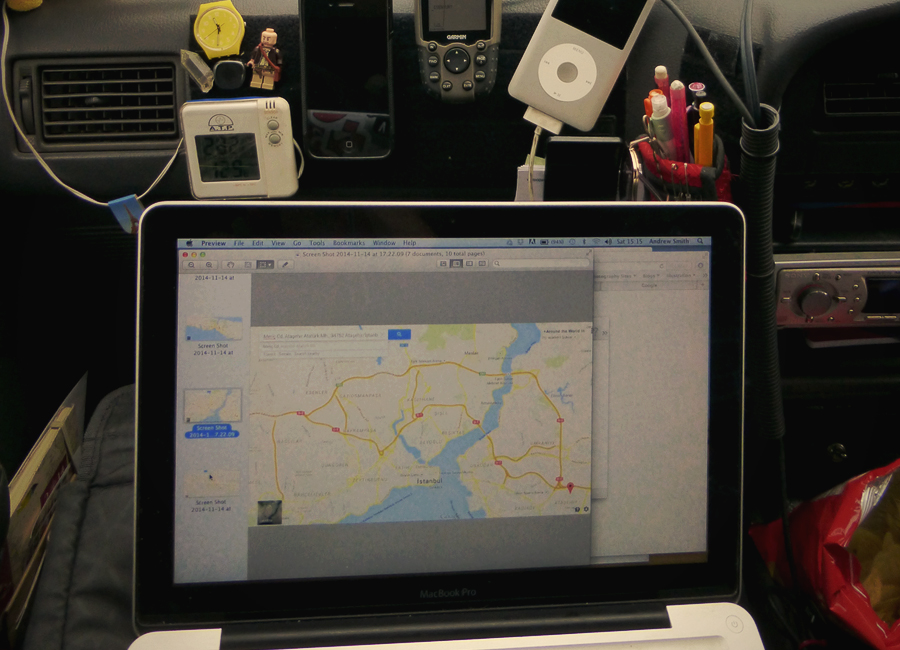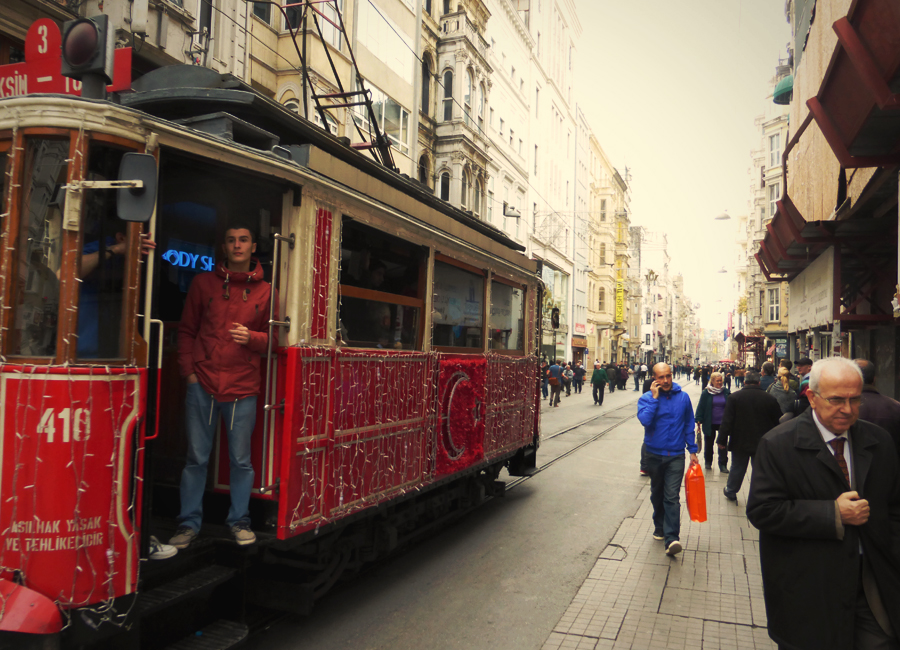|
Geographically it is obvious why Istanbul, with its 14 million people, is considered the second most congested city in the world. The narrow 30km stretch of land, where Istanbul sits, is the central corridor linking Europe to Asia: it is also divided by the Bosphorus Strait, linking the Black Sea in the North with the Sea of Marmara in the South. Just two bridges span the strait linking Europe to Asia, forming two of the most hectic bottlenecks in the world. More than 116 million cars travel across the bridges every year on just 14 lanes.
You drive on the right (most of the time), beep your horn… a lot, ignore traffic lights and road signs and, generally, do what you want. People often drive without lights in the dark and no-one uses indicators. If all that wasn’t enough - It’s not only the drivers you have to worry about, pedestrians also think they have the right to step out into the road at anytime, normally without looking! Our introduction to Istanbul involved driving onto Fatih Sultan Mehmet Bridge where 14 tollbooth lanes merge magically into just 5 east-bound lanes. Here, street vendors take advantage of the slow moving traffic to peddle their wares. This involves standing in the middle of the highway, usually with a large wooden cart, as rows of traffic pass dangerously close on either side. If the traffic clears and speeds up the vendors attempt to dive back onto the ‘not-much-safer’ hard shoulder. The vendors work well into the twilight hours and are not aware of how much a hi-vis jacket might extend their life expectancy. Just to put all this information into context it took us 4 hours to drive just 16km across the city. For the remainder of our 6-day visit we decided to park up Bee-bee and use public transport. Although public transport was lengthy and crowded (with 5 million users daily), it was cheap, varied and certainly less stressful than driving ourselves around the city. Thousands of ‘Dolmus’ minibuses interweave their haphazard way across the vast expanse of suburbs. Jump on-board and pass your bargain fare to the driver via a chain gang of squashed passengers. The Dolmus drivers are possibly some of the worst in the city, but as a passenger you benefit from their skilled overtaking, brazen manoeuvres and knowledgeable shortcuts.
Metrobuses interweave the city’s streets, linking suburban overland trains with a network of modern tramways. For a more nostalgic tram journey, you can catch the restored trams which climb the huge pedestrian Istiklal Caddesi Street in Beyoğlu. Too tired/lazy to climb the steep hill from the Bosphorus up to Taksim Square? Try the Funicular ‘climbing train’ which transports you the 60 metre ascent in just 110 seconds. A pre-paid travel card is swiped for each trip, regardless of the transport method, with each journey only costing a few lira.
While we mainly explored the city by foot, the variety of fascinating ways of getting around in Istanbul, with a wonderful mix of passengers, only added to our new-found love of the city.
1 Comment
Anne Smart
15/2/2015 03:46:50 pm
well done arriving safely without a scratch on Bee Bee.
Reply
Your comment will be posted after it is approved.
Leave a Reply. |
Archives
July 2020
Categories
All
|
Proudly powered by Weebly




 RSS Feed
RSS Feed